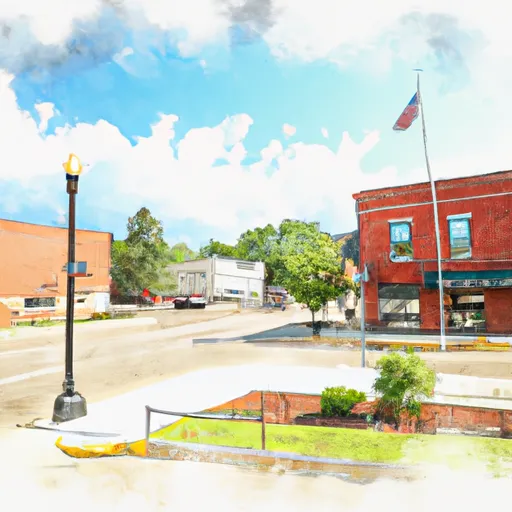-
 Snoflo Premium
Snoflo Premium
Get unlimited access to all our content
With no Ad interruptions! - Start Your Free Trial Login with existing account
Marietta
Eden Index
Climate
6.2
•
Recreation
1.1
•
Community
•
Safeguard
2.9/10

Marietta, Minnesota, located in Lyon County, offers a unique blend of natural beauty and outdoor recreational opportunities. The town experiences a humid continental climate, characterized by hot summers and cold, snowy winters. Summers are generally warm, with temperatures averaging around 80°F, perfect for enjoying outdoor activities.
Hydrologically, Marietta benefits from the nearby presence of the Yellow Medicine River, which provides a scenic backdrop and opportunities for fishing, canoeing, and kayaking. The river's water quality is generally good, with diverse aquatic life and opportunities for birdwatching.
Outdoor enthusiasts will find plenty of recreational activities in and around Marietta. The area boasts several parks and nature reserves, including the stunning Upper Sioux Agency State Park. This park offers hiking trails, birdwatching, camping, and winter activities like cross-country skiing and snowshoeing.
Additionally, the nearby Lake Shetek State Park is a popular destination for boating, swimming, and fishing. With its serene lakes and picturesque landscapes, Marietta is a paradise for nature lovers and those seeking outdoor adventures.
In summary, Marietta, Minnesota, offers a pleasant climate, diverse hydrology constituents, and a plethora of outdoor recreation opportunities, making it an ideal destination for nature enthusiasts and outdoor adventurers.
What is the Eden Index?
The Snoflo Eden Index serves as a comprehensive rating system for regions, evaluating their desirability through a holistic assessment of climate health, outdoor recreation opportunities, and natural disaster risk, acknowledging the profound impact of these factors on livability and well-being.
Climate Health Indicator (CHI): 6.2
Marietta receives approximately
621mm of rain per year,
with humidity levels near 84%
and air temperatures averaging around
7°C.
Marietta has a plant hardyness factor of
4, meaning
plants and agriculture in this region thrive during a short period during spring and early summer. Most
plants will die off during the colder winter months.
By considering the ideal temperature range, reliable water supplies, clean air, and stable seasonal rain or snowpacks, the Climate Health Indicator (CHI) underscores the significance of a healthy climate as the foundation for quality living.
A healthy climate is paramount for ensuring a high quality of life and livability in a region, fostering both physical well-being and environmental harmony. This can be characterized by ideal temperatures, reliable access to water supplies, clean air, and consistent seasonal rain or snowpacks.
Weather Forecast
Streamflow Conditions
Minnesota
Area Rivers
Minnesota
Snowpack Depths
Minnesota
Reservoir Storage Capacity
Minnesota
Groundwater Levels
Recreational Opportunity Index (ROI): 1.1
The Recreational Opportunity Index (ROI) recognizes the value of outdoor recreational options, such as parks, hiking trails, camping sites, and fishing spots, while acknowledging that climate plays a pivotal role in ensuring the comfort and consistency of these experiences.
Access to outdoor recreational opportunities, encompassing activities such as parks, hiking, camping, and fishing, is crucial for overall well-being, and the climate plays a pivotal role in enabling and enhancing these experiences, ensuring that individuals can engage in nature-based activities comfortably and consistently.
Camping Areas
| Campground | Campsites | Reservations | Toilets | Showers | Elevation |
|---|---|---|---|---|---|
| Welles Memorial Park | 5 | 953 ft | |||
| Buffalo River State Park | 45 | 978 ft | |||
| Kidder Rec Area | 8 | 956 ft | |||
| Rothsay City Park | None | 1,211 ft | |||
| Wagner Park | 78 | 1,033 ft | |||
| Chahinkapa Park | 6 | 956 ft |
Catastrophe Safeguard Index (CSI):
The Catastrophe Safeguard Index (CSI) recognizes that natural disaster risk, encompassing floods, fires, hurricanes, and tornadoes, can drastically affect safety and the overall appeal of an area.
The level of natural disaster risk in a region significantly affects safety and the overall livability, with climate change amplifying these risks by potentially increasing the frequency and intensity of events like floods, fires, hurricanes, and tornadoes, thereby posing substantial challenges to community resilience and well-being.
Community Resilience Indicator (CRI):
The Community Resilience Indicator (CRI) recognizes that education, healthcare, and socioeconomics are crucial to the well-being of a region. The CRI acknowledges the profound impact of these elements on residents' overall quality of life. By evaluating educational resources, healthcare accessibility, and economic inclusivity, the index captures the essential aspects that contribute to a thriving community, fostering resident satisfaction, equity, and social cohesion.

